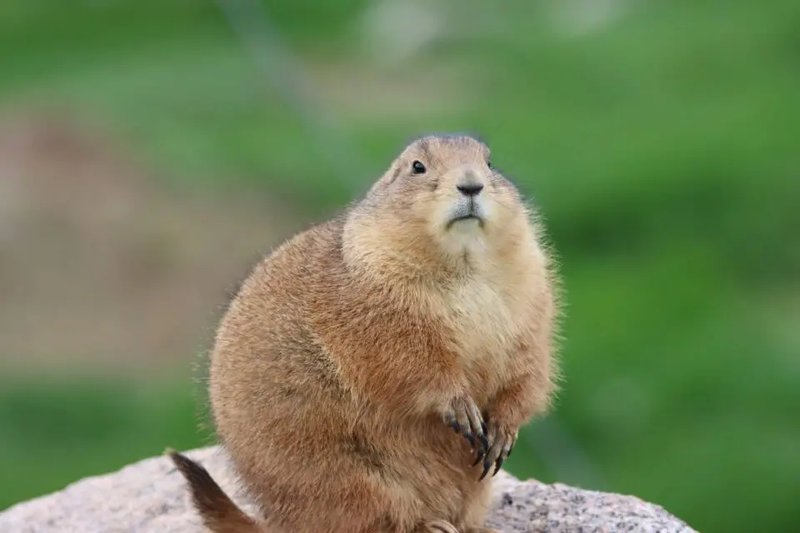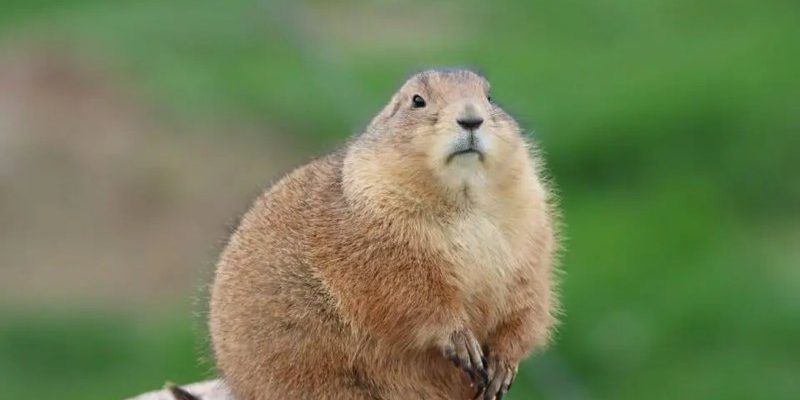
Exploring animals that resemble prairie dogs can be an exciting journey into the world of wildlife. Whether it’s their appearance, behaviors, or habitats, there are many fascinating creatures out there waiting to be discovered. So, grab a comfy chair and let’s dive into the ten animals that seem like cousins to the prairie dog and see how we can tell them apart.
1. Ground Squirrels
Ground squirrels are often mistaken for prairie dogs because of their similar size and burrowing habits. They tend to inhabit open areas, like grasslands and parks, where they dig complex tunnel systems. Ground squirrels are usually a bit smaller than prairie dogs and have a more slender build.
Their fur, which can range from gray to brown, often features lighter undersides. Unlike prairie dogs, ground squirrels tend to be more solitary. You might spot one scurrying off to its burrow when it senses danger, while prairie dogs will often alert the entire colony with their high-pitched barks. So, if you see a grouping of bushy-tailed critters chattering away, it’s likely prairie dogs you’re looking at!
2. Marmots
Marmots are another group of animals that bear a striking resemblance to prairie dogs. These large ground rodents are typically found in mountainous regions, where they thrive in cooler climates. Marmots sport a stout body and thick fur, making them bulkier than prairie dogs.
One of the most fascinating things about marmots is their hibernation habits. In colder months, they retreat to their burrows and enter a deep sleep, only waking up when the temperature rises. You can tell them apart from prairie dogs by their stocky build and the fact that they prefer isolated rocky areas rather than open grasslands. Next time you’re hiking in the mountains, keep an eye out for these cuddly giants!
3. 13-lined Ground Squirrels
As the name suggests, 13-lined ground squirrels have a distinctive appearance that sets them apart. While they share commonalities with their relatives, the typical ground squirrel, these little guys have striking stripes along their backs. This pattern can help you identify them more easily.
These squirrels thrive in open fields and grassy areas, often creating extensive burrows. Unlike prairie dogs, which live in colonies, 13-lined ground squirrels are more solitary and can often be found alone or in small family groups. Just remember their striped pattern, and you’ll be able to tell them apart in no time!
4. Chipmunks
Chipmunks are small, energetic creatures that many people recognize by their distinctive stripes and smaller size compared to prairie dogs. You can typically find them in forests and gardens, where they’re busy foraging for seeds and nuts.
While prairie dogs live in large colonies, chipmunks are more solitary and prefer to dig smaller, simple burrows. They’re also known for their cheek pouches, which they use to store food. If you see a little critter darting back and forth, it’s probably a chipmunk, not a prairie dog.
5. Beavers
Now, this one might surprise you—beavers! They’re not exactly the same at first glance, but when it comes to living in close-knit family groups and maintaining a dwelling, they share some similarities with prairie dogs. Beavers are semi-aquatic rodents known for their exceptional dam-building skills.
Unlike prairie dogs, beavers are larger, with broad tails and flat bodies. They’re often found near bodies of water, whereas prairie dogs prefer dry open fields. The construction of their dams creates complex ecosystems, which is a different kind of community than prairie dog colonies, but you can appreciate how both animals shape their environments!
6. Vole
Voles are small, burrowing rodents that thrive in grassy areas, making them another close relative to prairie dogs. They have a compact body and a short tail, giving them a rotund appearance. Voles live in burrows that can be extensive, but they tend to be more solitary compared to the social nature of prairie dogs.
One of the key differences is that voles are often less active during daylight hours, making them more elusive. Prairie dogs, on the other hand, are quite social and can be seen basking in the sun. If you’re looking for a social gathering of animals, prairie dogs are your go-to, while voles are more like the quiet neighbors you seldom see.
7. Cavies (Guinea Pigs)
Let’s not forget about cavies, commonly known as guinea pigs. While they’re not wild like prairie dogs, they share a similar body shape and can produce a variety of vocalizations. Cavies are domesticated rodents that love to live in groups, just like prairie dogs do in the wild.
However, unlike prairie dogs, cavies don’t dig extensive burrows in the ground. Instead, they make cozy homes in nests and cages. Their round bodies, large eyes, and short legs differentiate them easily. So, if you’re thinking of cuddling up with a fluffy companion, a guinea pig is your best bet.
8. Naked Mole Rats
Naked mole rats might be the most unique of the bunch. Unlike prairie dogs, these critters are nearly hairless and have wrinkled skin, giving them an unusual appearance. However, they share a fascinating similarity with prairie dogs—they live in large colonies within elaborate burrow systems.
Naked mole rats are also unique in their social structure, having a queen, much like bees. While they may not have the same appearance, their social behaviors and living arrangements are oddly similar. So, if you’re looking for similarities beyond looks, naked mole rats fit the bill!
9. Ground Hogs (Woodchucks)
Groundhogs, also known as woodchucks, are often confused with prairie dogs due to their burrowing nature and herbivorous diet. They’re a bit larger and heavier than prairie dogs with a stockier build. You’ll often spot them in fields or meadows, where they graze on grasses and vegetables.
Groundhogs are primarily solitary animals, unlike the tight-knit communities of prairie dogs. They’re also known for their hibernation habits, where they sleep through winter, and once they’re awake, they are quite content to live off the land. Remember, if you see a chunky, furry friend munching on grass, it might just be a groundhog!
10. European Susliks
Finally, let’s meet the European susliks. These small rodents have a lot in common with prairie dogs, especially in their habitat preferences and social behaviors. Found in the steppes of Europe, susliks live in large colonies and are excellent diggers.
Their fur is typically light brown and peppered with spots, which sets them apart from the uniform color of prairie dogs. Plus, they have a more elongated body and are smaller than prairie dogs. If you’re wandering through European grasslands and see a group of small, spotted rodents, it’s likely susliks, not prairie dogs.
In conclusion, wildlife is full of fascinating creatures that share traits with each other. While prairie dogs are beloved for their sociable nature and charming antics, these ten animals also contribute to the rich tapestry of animal life on our planet. Next time you spot one of these critters, you’ll have a better idea of how they compare to the lovable prairie dog!

